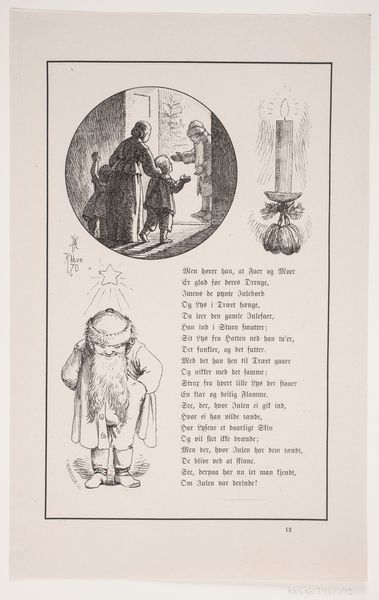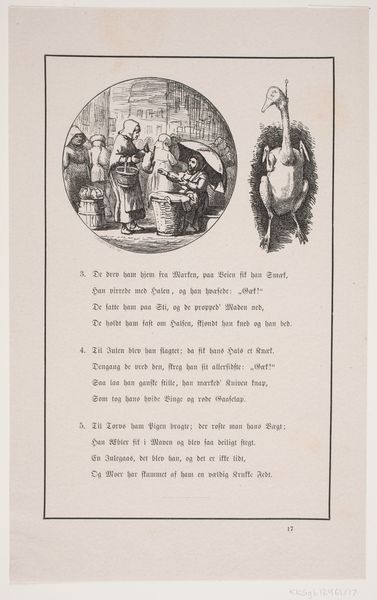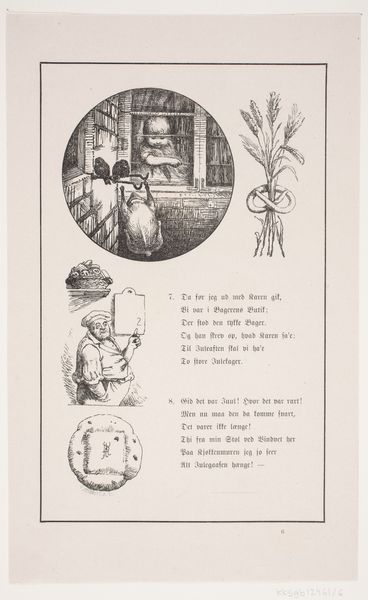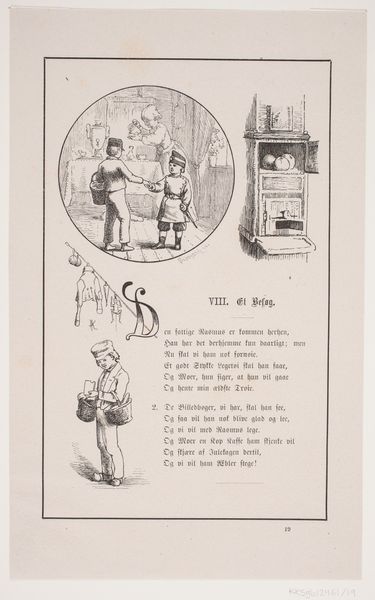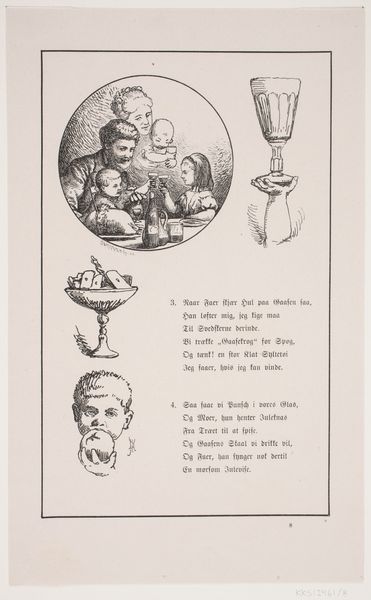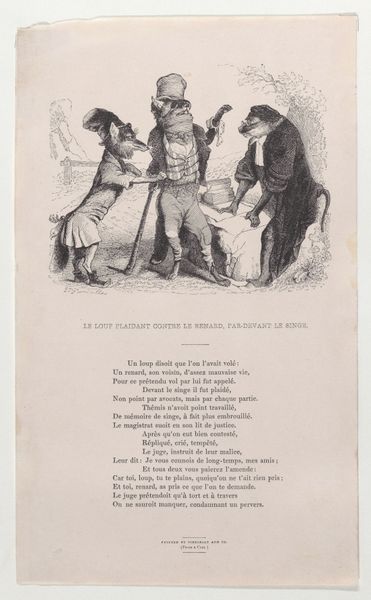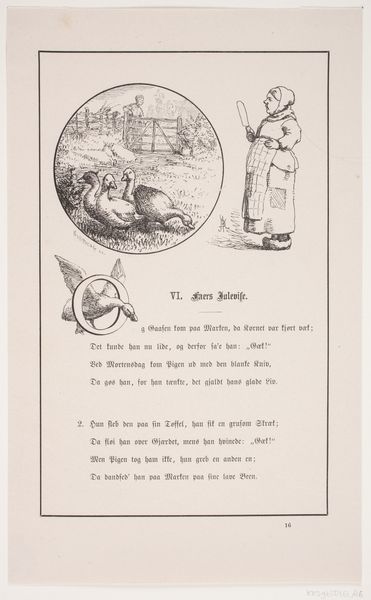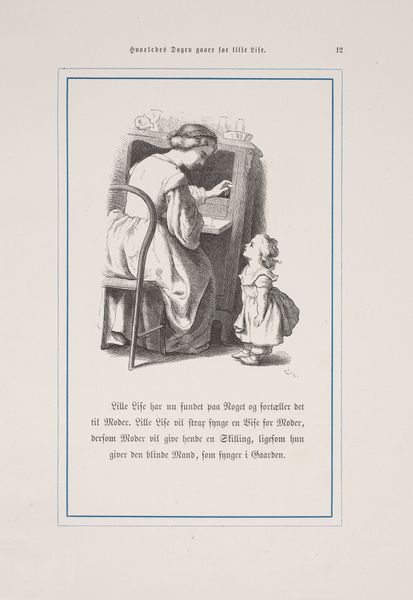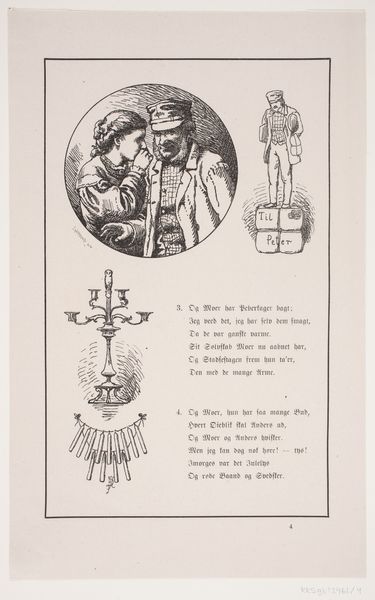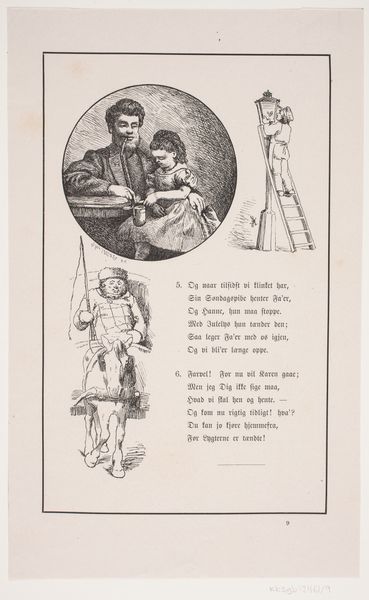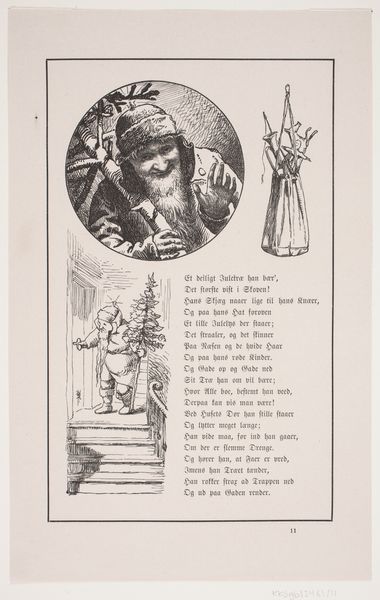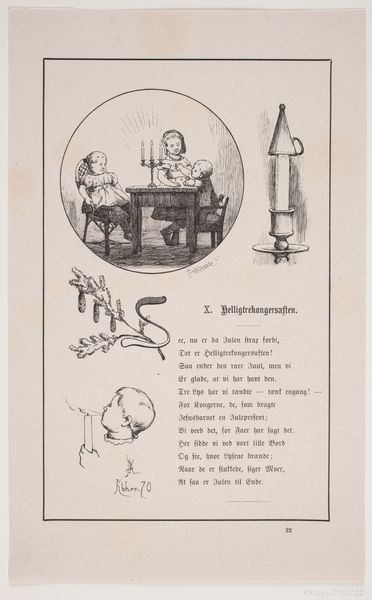
Dimensions: 254 mm (height) x 160 mm (width) (bladmaal), 205 mm (height) x 128 mm (width) (billedmaal)
Curator: This is F. Hendriksen's illustration for Johan Krohn's "Peters jul," created in 1870. The piece employs ink in a print medium to depict scenes from this Christmas story. My first impression is one of quaint domesticity and storytelling, typical of genre painting during the romantic period. The visual structure reminds me of a page torn from a book with old Germanic fonts and embellished framing elements, such as leafy, wintery garlands. Editor: From a material perspective, the choice of ink and printmaking situates this work within a wider culture of reproducibility and distribution. It suggests an attempt to bring art to a broader audience through affordable means. Curator: Precisely, and understanding the narrative is crucial. "Peters jul" explores themes of childhood innocence and festive family traditions, all within a framework influenced by cultural norms and burgeoning bourgeois values. There's a distinct emphasis on sentimentality here, a quality often critiqued, yet it speaks to the power dynamics within family structures of the period, positioning children in relation to parental expectations of piety. Editor: Right, the labor of producing these illustrations, likely involving artisan workshops, connects it to specific social and economic contexts of the time. The material properties of ink, its permanence and accessibility, made mass production easier. Who had access to it speaks volumes. It allows the piece to endure and spread narratives more easily. Curator: Moreover, let’s think about the portrayal of women here. The attentive mother, the devout woman—these are highly constructed ideals, limiting the female experience within a moralistic framework, reinforcing gender roles within family and the church, and projecting that image into broader society. It also subtly reflects anxieties about social change that ran rampant. Editor: Absolutely. By looking at how the image was crafted, what materials were used, and how it circulated, we can understand the networks of production and consumption and the hands it went through. We begin to decipher labor that went into image distribution. Curator: The romantic idealization in the work becomes less about simple nostalgia, and more about the anxieties and power dynamics being negotiated and perpetuated within the cultural landscape of late 19th-century Denmark. Editor: Indeed, looking at materials and the means of reproduction provides invaluable insights into the values and conditions shaping its creation and reception. Curator: I agree; this has opened up a layered understanding of this seemingly simple work, unveiling complexities we might have overlooked. Editor: A wonderful conversation, one that emphasizes that material matters just as much as concept and style in decoding our visual world.
Comments
No comments
Be the first to comment and join the conversation on the ultimate creative platform.
